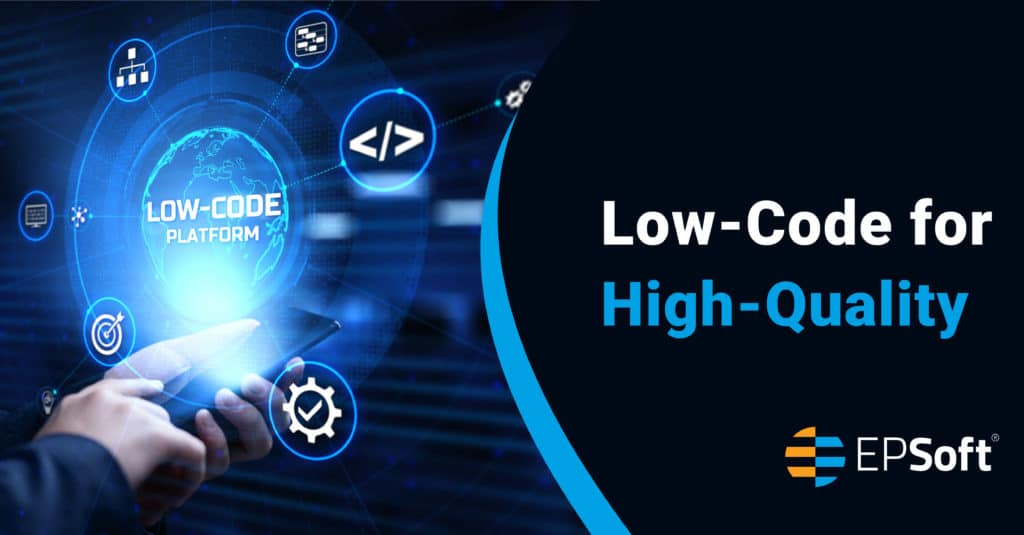We’ve officially entered the age of citizen developers—business users who build applications and programs even though they have little to no coding experience. Today, business users can leverage innovative platforms to do what previously required hours of custom coding by professional developers. Indeed, low-code and no-code platforms are all the rage. In many ways, low-code technology has democratized how business happens, encouraging collaboration, communication and prioritization of goals across the organization. But can they perform as well as legacy systems and more “hi-tech” programs and platforms? Let’s take a look.
What does low-code mean?
Low-code development refers to a platform that uses visual elements for the user interface. For example, in software development, this refers to a technology whose interface provides flowcharts, graphs, decision trees and more to guide the development experience. In a typical software build, professional developers draft code to achieve the same results.
In process automation, low-code technology uses the same kind of visual interface to create a collaborative working environment for process management, working across departments to meet company goals by building automations and improving business processes end to end.
Low-code Advantages and Limitations
Like any technology, low-code platforms have both their advantages and limitations. But with thoughtful implementation and strategic rollout, low-code process automation can help you scale your business and achieve company goals.
First, low-code does not mean low-analysis, low-IT or low-tech. Business process automation technology isn’t a hands-off project, and we’re not here to pretend like it is. These platforms are simple to use and can help you transform how work gets done, but they still require strategy and coordination. While low-code is easy at the user level, implementation, project management, and governance are critical.
One great advantage low-code platforms offer is going beyond robotic process automation (RPA). Its very nature limits RPA; it can only deliver so much on its own. It lacks the cognitive abilities of artificial intelligence and is also unable to independently interface with APIs—which many legacy and modern systems rely on. Without these capabilities, RPA can perform the task at hand and no more. And here is where low-code technology steps in. Unlike RPA, low-code platforms like EZFlow feature robust capabilities for Process Intelligence, modeling and more, plus third-party integrations to help you quickly do more with your RPA bots.
An Example of Low-Code Tech in Action
For example, let’s say your HR department needs to review a high volume of candidate applications. RPA can help sort the submissions—by city, by keywords, and more. But instead of just simply sorting them with the help of RPA, you can then use low-code tools like optical character recognition (OCR) and natural language processing (NLP) to parse the data even further, seeking specific experience and skills. These tools can even support onboarding processes for new hires, sending automated emails for account setup, intranet systems, payroll, and more. RPA truly is just the tip of the iceberg.
Work through your processes from a single-pane view to best set your organization up for success. This 360-degree approach helps you understand what your workflow looks like, where to make key changes and why.
EZFlow for Low-Code
With RPA, third-party integrations, Process Intelligence discovery tools, and low-code AI and process automation features, EZFlow delivers all the benefits of low-code technology and more. Additionally, our process experts understand how to analyze, address and optimize processes using the systems and data you already have to guide the way. Your business process can be better with low-code automation tools. We can show you how. Get in touch for your free consultation and process workshop.

